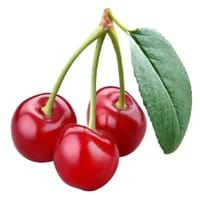Health Benefits
Arthritis prevention, Cancer prevention, Gout treatment, Regulation of heart rate, Treatment of osteoarthritis
Arthritis treatment, Cancer prevention, Eczema treatment, Increases metabolic rate, Kidney stone treatment, Prevents constipation, Removes toxic metals, Treatment of alzheimer's disease
General Benefits
Anti oxidant properties, Anti-inflammatory properties, Controls blood pressure, Cures headache, Digestive aid
Anti oxidant properties, Anti-inflammatory properties, Controls blood pressure, Digestive aid, Strengthens bones, Treatment of sore eyes
Skin Benefits
Anti-aging benefits, Brightens and lightens complexion, Skin rejuvenation, Treatment of dark spots
Heals sunburn, Hydrates skin, Skin rejuvenation, Skin revitalization, Treatment of dark spots, Treatment of skin diseases
Hair Benefits
Acts as moisturizer, Protects hair, Regulates hair growth, Rejuvenates scalp
Promotes longer and healthier hair, Protects hair, Regulates hair growth, Shiny hair
Allergy Symptoms
Anaphylaxis, Breathing difficulty, Fainting, Itching, Nasal congestion, Nausea, Swelling of mouth, tongue or lips, Tingling sensation in mouth, Vomiting, Wheezing
Breathing difficulty, Decrease in blood pressure, Diarrhea, Itching, Red rash, Runny nose, Sneezing, Vomiting, Watery eyes
Side Effects
Abdominal cramps, Allergic reaction, Bloating, Intestinal gas
Stressed heart, Irritation, Swelling, Swelling around mouth, Throat swelling, Tongue swelling, Strained blood vessels
Lactating Women
No
Not Available
Best Time to Eat
Best if taken as a breakfast (or empty stomach), As a snack in the late afternoon, Don't eat after meal, Morning time (before lunch)
Along with meal, As a snack in the late afternoon, Eat the fresh ones, avoid mixing with any other foods, don't eat after meal., Strictly avoid empty stomach
Vitamin B5 (Pantothenic Acid)
Vitamin C (Ascorbic Acid)
Vitamin K (Phyllochinone)
Phytosterol
Not Available
Calories in Fresh Fruit with Peel
Calories in Fresh Fruit without Peel
Not Available
Calories in Frozen Form
Not Available
Calories in Dried Form
Not Available
Calories in Canned Form
Not Available
Calories in Juice
Not Available
Calories in Jam
Not Available
Calories in Pie
Not Available
Type
Tree fruit
Fruit vegetable, Melon
Season
Summer
Spring, Summer
Varieties
Evan, Mesabi, Meteor, Northstar, Montmorency and Mongolian
Armenian, English, Garden, Kirby, Lemon and Persian
Color
Red
Dark green, Green
Taste
Sweet-Sour
Juicy, Watery
Origin
Europe, Western Asia
India
Climatic Conditions
Cold
Warm
Facts about
- Using 1/4 tablespoon of almond extract with cherries, brings out the real flavor of cherries.
- In earlier times, serving cherry pie with ice cream was prohibited.
- 23 April is National cherry cheese cake day.
- Outer waxy coating of cucumber can erase the pen writing.
- Pressing cucumber on roof of mouth for 30 sec will eliminate bad breath.
- It is made up of 96% water.
- English cucumber can grow longer than 2 feet.
Top Producer
Turkey
China
Other Countries
Albania, Armenia, Austria, Azerbaijan, Belarus, Croatia, Denmark, Germany, Hungary, Iran, Italy, Macedonia, Moldova, Poland, Russia, Serbia, Ukraine, United States of America, Uzbekistan
Egypt, Indonesia, Iran, Japan, Russia, Spain, Turkey, Ukraine, United States of America
Top Importer
Germany
France
Top Exporter
Poland
Spain
Botanical Name
Prunus cerasus
Cucumis sativus
Synonym
Not Available
Not Available
Subkingdom
Tracheobionta
Tracheobionta
Division
Magnoliophyta
Magnoliophyta
Class
Magnoliopsida
Magnoliopsida
Subclass
Rosidae
Dillenhidae
Order
Rosales
Cucurbitales
Family
Rosaceae
Cucurbitaceae
Species
P. cerasus
C. sativus
Generic Group
Rose
Not Available
Compare Sour Cherry and Cucumber
It is important compare Sour Cherry and Cucumber as both the fruits have a different nutritional value. Their comparison can be done on the basis of their vitamin and mineral content, calories, benefits as well as characteristics, making it easier for us to choose the best fruit for our diet. Their general health benefits are as follows:
Sour Cherry Benefits: anti oxidant properties, anti-inflammatory properties, controls blood pressure, cures headache and digestive aid.
Cucumber Benefits: anti oxidant properties, anti-inflammatory properties, controls blood pressure, digestive aid, strengthens bones and treatment of sore eyes.
Fruits are also used as a remedy for various hair problems. The hair benefits of Sour Cherry are: acts as moisturizer, protects hair, regulates hair growth and rejuvenates scalp and hair benefits of Cucumber are: promotes longer and healthier hair, protects hair, regulates hair growth and shiny hair. Some fruits are known to cause allergic reactions. The allergy symptoms of first fruit are: anaphylaxis, breathing difficulty, fainting, itching, nasal congestion, nausea, swelling of mouth, tongue or lips, tingling sensation in mouth, vomiting and wheezing and the symptoms of second fruit are: breathing difficulty, decrease in blood pressure, diarrhea, itching, red rash, runny nose, sneezing, vomiting and watery eyes. Get sorted Sour Cherry vs Cucumber comparison with the help of fruit comparison tool by fruitvs.com.









